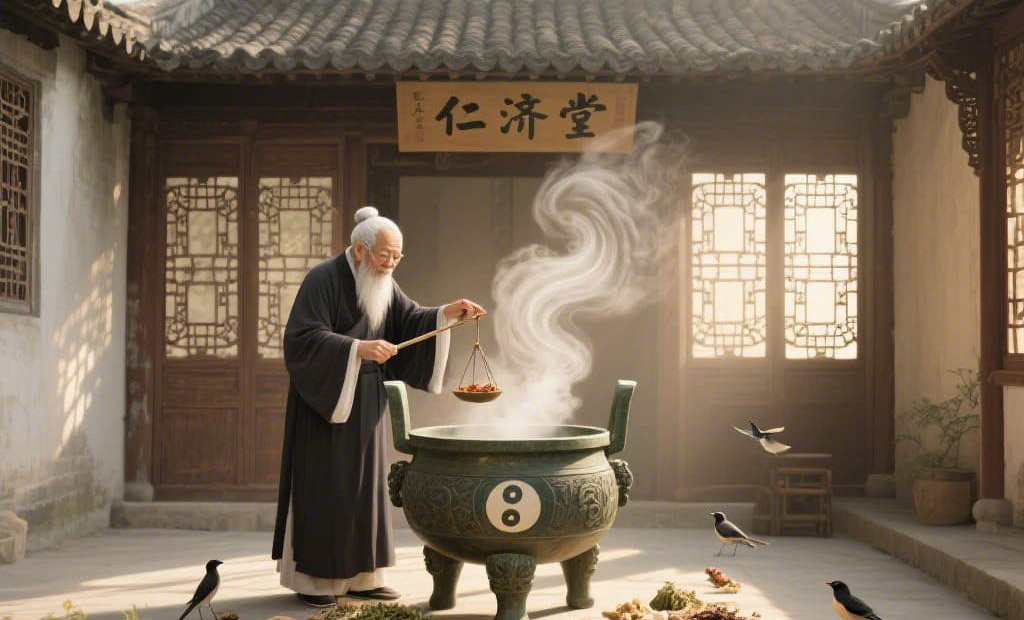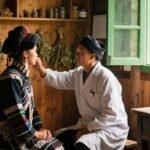Woniang Jidongbai (Uterine Tumors and Cancer)
Overview
In Miao medicine, any uterine malignancy is called Woniang Jidongbai. A gelatinous, frog-egg–like mass in the uterus is termed Daiqiuzhengesou (“toad embryo”), also known as Jiyangyin, arising from old physical trauma.
In TCM, uterine cancer or tumors are called “uterine accumulations” (zi gong ji) or “masses” (hen). They manifest as lower abdominal lumps with distension, pain, or fullness, often with abnormal menstruation or discharge, sometimes affecting fertility.
In Western medicine, cervical cancer, endometrial carcinoma, and uterine sarcoma correspond to this pattern and can be managed with similar differentiation principles.
Huhoujipeng · Miao Classification
Woniang Jidongbai has two subtypes:
Daiqiuzhengesou (Toad Embryo)
Fenglepu Jiyangyin (Progression to Lung Cancer)
Aiduojiang · Causes
Miao medicine sees all cancer as the result of “old trauma.” Living in remote areas, people suffer animal attacks, insect bites, tool injuries, or falls. These traumas—when healed—leave “old damage.” Toxic pathogens then invade these weakened sites, leading to malignancy.
Gengduomeng · Pathogenesis
“Chaos toxins” (du luan) damage qi, blood, and fluids. Defensive and nutritive qi lose control, allowing carcinogenic toxins to invade uterine cells, damage their protective qi, and induce endless malignant transformation. This leads to abnormal, disordered cell proliferation—uterine tumors.

Diagnostic Key Points
Diagnostic Basis
(1) History of emotional depression, pathogen exposure during menses or postpartum, menstrual irregularity, or abnormal discharge. Some have no clear history.
(2) Abnormal uterine bleeding (heavy or prolonged menses), abnormal discharge, lower abdominal fullness or pain, or pain during menses. Some are asymptomatic.
Related Exams
Gynecological exam, ultrasound, CT, MRI, laparoscopy, or hysteroscopy to confirm.
Differential Diagnosis
Qiuna Gabo (Uterine Fibroids) also causes prolonged bleeding, lump sensation, and pain. Fibroids show uterine enlargement, firm irregular masses on exam or ultrasound in submucosal, intramural, or subserosal locations. Woniang Jidongbai may follow old trauma and shows cancerous changes.
Syndrome Differentiation & Treatment
Daiqiuzhengesou (Toad Embryo)
Manifestations: Initial nausea, vomiting, food aversion, then rapid abdominal enlargement, scant dark bleeding that may escalate to hemorrhage with frog-egg–like tissue fragments. Pale complexion, fine weak pulse, critical condition.
Meridian: Heat meridian, heat disease.
Principle: Invigorate blood and resolve stasis (huo xue hua yu); regulate qi and disperse masses (li qi san jie).
Prescription & Explanation:
Iris ensata (xian wei, xian wei) 28g
Fallopia multiflora vine (he shou teng) 15g
Scutellaria barbata (ban zhi lian) 20g
Prunella vulgaris (xia ku cao) 10g
Rubia cordifolia (qian cao) 10g
Decoction for one day only; refer immediately for hospital oncology care.
Fenglepu Jiyangyin (Progression to Lung Cancer)
Manifestations: Initially pregnancy-like signs, rapid abdominal growth, then persistent dry cough for 1–2 months, hemoptysis, chest pain, breathlessness, fever, weight loss, weakness, chills.
Meridian: Both cold and heat meridians.
Principle: Invigorate blood and resolve stasis (huo xue hua yu); regulate qi and relieve pain (xing qi zhi tong).
Prescription & Explanation:
Agrimonia pilosa (xian he cao) 10g
Polygonum multiflorum vine (xiao xue teng) 10g
Mahonia fortunei (shi da gong lao) 8g
Lysimachia christinae (jiu jie cha) 10g
Three-seven powder (san qi fen) 2g added to decoction
Decoction orally.
Prevention & Care
Educate on cancer (supports resilience); regular screenings.
Monitor high-risk individuals; refer promptly for any abnormalities.
Notes
Miao medicine holds that qi, blood, and fluids form the body’s basis. Trauma and toxins damage these elements, causing qi deficiency, blood stasis, and fluid dysfunction. Over time, masses form and may turn malignant. Treatment centers on detoxification, blood invigoratio n, stasis resolution, and mass dissolution.
This article is provided solely for the cultural and educational study of traditional medicine. It should not be construed as medical diagnosis or (used in traditional contexts). Before applying any of the therapies described above, you must first consult a licensed physician in your jurisdiction.



Leave a Reply